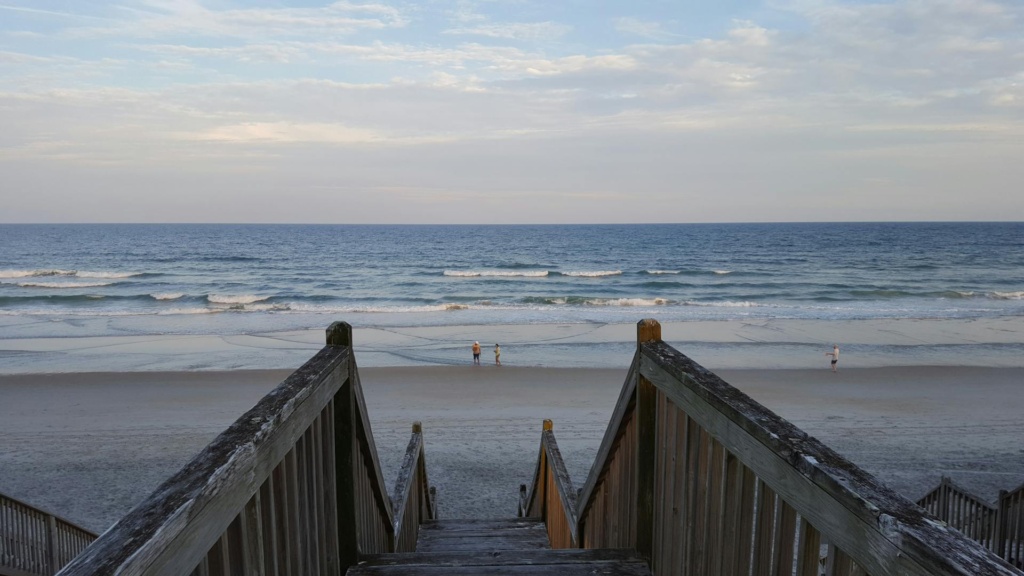Saisonale Trends und grenzüberschreitendes Suchverhalten: Die Herausforderungen der SEO im europäischen Reisebereich
- 12. Juli 2025
- Neueste Artikel über SEO Trends und Tipps
Wenn es um digitales Marketing für die Reisebranche geht, bietet Europa eine einzigartige Landschaft. Mit über 40 Ländern auf relativ kleinem Raum, jedes mit seiner eigenen Sprache, Kultur, Währung und Reisegewohnheiten, SEO in Europa erfordert einen deutlich differenzierten Ansatz. Anders als in den USA oder China, wo eine einzige Sprache oder ein einheitlicher kultureller Kontext das Suchverhalten dominiert, ist Europa ein Schmelztiegel unterschiedlicher Nutzerabsichten, saisonaler Muster und grenzüberschreitender Reisegewohnheiten. Für Reise-Websites macht diese Komplexität SEO sowohl zu einer Kunst als auch zu einer Wissenschaft.

1. Europa als stark fragmentierter Suchmarkt
Eines der prägenden Merkmale des europäischen digitalen Ökosystems ist seine Fragmentierung. Die Sprache ist der offensichtlichste Faktor – selbst innerhalb eines Landes wie der Schweiz suchen Nutzer möglicherweise auf Deutsch, Französisch oder Italienisch. Doch die Unterschiede gehen tiefer. Deutsche Reisende suchen tendenziell früh im Jahr (Januar–März) nach Sommerurlauben, während Italiener oft kurzfristig buchen. Französische Touristen suchen möglicherweise nach Campingerlebnissen, während skandinavische Nutzer nachhaltigen Tourismus und Natururlaube bevorzugen. SEO-Strategien müssen diese Verhaltensweisen widerspiegeln.
Darüber hinaus dominieren Suchmaschinen wie Google in vielen Ländern, aber nicht in allen. In der Tschechischen Republik beispielsweise Seznam hält noch immer einen bedeutenden Marktanteil. In Frankreich Qwant gewinnt bei datenschutzorientierten Nutzern an Bedeutung. Bei einer Reisewebsite, die mehrere Länder anspricht, muss die technische SEO berücksichtigen, wie verschiedene Algorithmen Inhalte, Metadaten und Benutzererfahrung interpretieren.
2. Die Bedeutung der saisonalen SEO-Planung
Saisonalität ist vielleicht der kritischste Faktor für Europa SEO Strategien im Reisesektor. Europäische Nutzer planen ihren Urlaub nach festen Schulferien, religiösen Feiertagen und nationalen Feiertagen – und diese variieren je nach Land erheblich. Zum Beispiel:
- Großbritannien und die Niederlande erleben oft Spitzen im Suchverkehr für Reisen in Februar (Halbzeitferien), Ostern, Juli–August, Und Oktober.
- Deutsche Benutzer Möglicherweise beginnen Sie bereits im Januar mit der Suche nach „Sommerurlaub Italien“.
- Spanische und portugiesische Benutzer planen ihren großen Sommerurlaub oft später – Juni bis Juli.
- Nordische Länder zeigen ein starkes Suchvolumen für Winterurlaube in Südeuropa oder den Alpen ab Oktober.
Effektive Content-Kalender müssen sich an diesen Suchtrends orientieren. Wenn Inhalte zu spät veröffentlicht werden – selbst um wenige Wochen – kann dies dazu führen, dass das Hauptsuchfenster verpasst wird. Mithilfe von Tools wie Google Trends, der Search Console und lokalen SEO-Plattformen lässt sich ermitteln, wann die Nachfrage nach bestimmten Reisezielen oder Aktivitäten in den jeweiligen Zielmärkten steigt.
3. Grenzüberschreitende Suchanfragen und Sprachmischung
Eine weitere besondere Herausforderung ist grenzüberschreitendes SuchverhaltenEin Reisender in Belgien könnte mit niederländischen oder französischen Schlüsselwörtern nach einem Skigebiet in Österreich suchen, während ein polnischer Nutzer auf Englisch nach Resorts an der Ostseeküste sucht. Tatsächlich verwenden viele Europäer Englisch als Brückensprache bei der Suche nach Reiseinformationen außerhalb ihres Heimatlandes.
Dies bringt sowohl Chancen als auch technische SEO-Herausforderungen mit sich:
- Hreflang-Implementierung ist entscheidend. Es stellt sicher, dass Benutzer auf der richtigen Sprachversion einer Website landen, verbessert das Benutzererlebnis und reduziert die Absprungrate.
- Schlüsselwortzuordnung müssen mehrsprachige Synonyme und semantische Variationen berücksichtigen. Beispielsweise können „vacanze al mare“ (Italienisch), „beach holidays“ (Englisch) und „ferien am meer“ (Deutsch) dieselbe Absicht verfolgen, aber in den SERPs unterschiedlich funktionieren.
- Meta-Beschreibungen und Titel müssen übersetzt – und nicht nur lokalisiert – werden, um native Suchmuster, Redewendungen und kulturelle Nuancen widerzuspiegeln.
4. Benutzerabsicht und Geräteverhalten über Grenzen hinweg
Europäische Nutzer zeigen auch unterschiedliche Gerätenutzungs- und Inhaltserwartungen. In Südeuropa ist die mobile Nutzung höher als in den nördlichen Ländern. Deutsche und niederländische Nutzer suchen während der Arbeitszeit häufig am Desktop, während spanische und italienische Nutzer abends lieber mobil surfen.
Auch die Nutzerabsichten variieren. Manche Nutzer suchen nach Preisvergleichen, andere nach Inspiration oder praktischen Reiseführern. Reisemarken müssen die Inhaltsformate – Blogbeiträge, Landingpages, Reiseplaner und lokale Karten – aufeinander abstimmen, um allen Nutzerabsichten auf allen Geräten gerecht zu werden.
5. Fallbeispiel: Multi-Country-SEO für ein Boutique-Reisebüro
Ein österreichisches Boutique-Reiseunternehmen hat seine Website kürzlich umgestaltet, um europäische Reisende besser zu bedienen. Die wichtigsten Änderungen waren:
- Erstellen separater Zielseiten für Englisch, Deutsch, Französisch und Italienisch mit regionsspezifischen Schlüsselwörtern und Preisformaten.
- Anpassen der Veröffentlichungszeitpläne um sie an den Urlaubsplanungskalender jedes Landes anzupassen.
- Lokalisieren von Blog-Inhalten basierend auf der Absicht – beispielsweise bevorzugten französische Benutzer Artikel über Gastronomie und regionale Weine, während britische Benutzer sich mehr mit Inhalten zu „versteckten Schätzen“ beschäftigten.
- Erstellen interner Links zwischen länderspezifischen Reiserouten, und hilft Benutzern aus einer Region, Ziele zu erkunden, die sie möglicherweise nicht in Betracht gezogen haben.
Das Ergebnis: eine Steigerung des organischen Datenverkehrs aus Deutschland um 381 TP4T, aus Großbritannien um 441 TP4T und eine Verbesserung der Konversionsraten von mobilen Benutzern in Frankreich um 601 TP4T.
6. Empfehlungen für erfolgreiches Reise-SEO in Europa
Um in einem derart komplexen Umfeld erfolgreich zu sein, müssen Reisemarken:
- Benehmen Keyword-Recherche auf Länderebene anstatt sich auf allgemeine europäische Daten zu verlassen.
- Verwenden Google Trends mit regionalen Filtern um Redaktionskalender zu planen.
- Bauen sprachspezifische Content Hubs – gehen Sie nicht davon aus, dass englische Inhalte ausreichen.
- Schiene Geräte- und Verhaltensmuster pro Land, um die UX zu optimieren.
- Implementieren hreflang-Tags sorgfältig und testen Sie sie regelmäßig.
Abschluss
Reisebezogene SEO ist in Europa deutlich komplexer als in sprachlich und kulturell einheitlicheren Märkten. Das Verständnis saisonaler Zyklen, grenzüberschreitendem Verhalten und lokalisierter Nutzerabsichten ist der Schlüssel zu langfristiger Sichtbarkeit und erfolgreicher Konversion. Für Marken, die bereit sind, die harte Arbeit einer umfassenden Lokalisierung und präzisen technischen SEO zu leisten, kann sich dies in einem der wettbewerbsintensivsten Reisemärkte der Welt auszahlen.
Wenn Sie Ihre Europa SEO Um Ihre Strategie zu entwickeln und sich an das mehrsprachige, saisonale Suchverhalten der Region anzupassen, sind Investitionen in gründliche Recherche, sprachspezifische Optimierungen und benutzerzentriertes Design nicht optional, sondern unerlässlich.
Über uns und diesen Blog
Wir sind ein digitales Marketingunternehmen, dessen Schwerpunkt darauf liegt, unseren Kunden dabei zu helfen, in mehreren Schlüsselbereichen großartige Ergebnisse zu erzielen.
Kostenloses Angebot anfordern
Wir bieten professionelle SEO-Dienste an, die Websites dabei helfen, ihren organischen Suchscore drastisch zu steigern, um auch bei stark umkämpften Keywords um die höchsten Platzierungen konkurrieren zu können.
Abonnieren Sie unseren Newsletter!
Mehr aus unserem Blog
Alle Beiträge anzeigenNeueste Beiträge
- Hong Kong Business: Wenig bekannte SEO-Strategien für die Expansion in Europa und Amerika 5. Dezember 2025
- Von Asien nach Amerika: Die wirkungsvolle SEO-Formel hinter Chinas globalem Aufstieg 1. Dezember 2025
- Wie singapurische Unternehmen in Europa erfolgreich sind: Die Schlüsselrolle von SEO 27. November 2025








